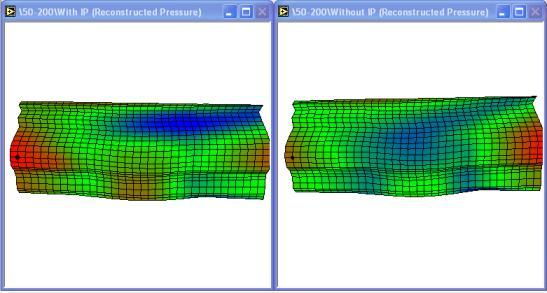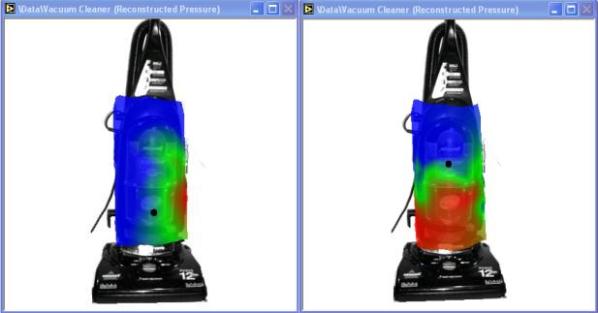148th ASA Meeting, San Diego, CA
Sound, As We See It: A Better Way to Diagnose Noise Sources
Ravinder Beniwal- Ravi@SenSound.com
SenSound
221 Lewiston Road
Grosse Pointe Farms, MI 48236
Sean F. Wu
Department of Mechanical Engineering
Wayne State University
Detroit, MI 48202
Popular version of paper 4pNS5
Presented Thursday Afternoon, Nov 18, 2004, Time: 2:30 PM
148th ASA Meeting, San Diego, CA
In the pursuit of improving both the perceived and absolute quality of products in terms of their noise levels, engineers and researchers are often required to diagnose noise sources and their transmission paths. Procedurally, noise diagnosis consists of capturing sound pressure, power, and intensity measurements around all suspected sources to learn as much as possible about offending noise characteristics. If these are not enough to pinpoint the sources, then source ranking and identification of contributions from individual components are required. Needless to say, success in this type of diagnostics protocol requires many years of practical experience. Experience, however, also tells us that these tests are time consuming and ad hoc in nature, and the results obtained are valid at measurement locations only. In this paper, SenSound's Acoustic Holography (SenAH), a new approach to noise diagnostics is presented, which significantly reduces the time and complexities involved in noise diagnostics. This approach is based on the Helmholtz equation least squares method. This technology enables both the seasoned engineer and the technician to quickly diagnose a noise problem by visualizing the entire sound field generated by a sound source. It provides an accurate mapping of the sound field on 3D surfaces and its surrounding regions. These results enable one to trace sound back to its source and separate airborne from structure-borne sounds. The process can be completed in minutes and the acoustic images obtained speak for themselves.
Two examples of the capabilities of this technology follow:
The image below shows the result of a test to evaluate the effectiveness of an automotive instrument panel in reducing noise. Red spots indicate noise sources or transmission paths. The color plot on the left shows the 3D noise map on the instrument panel surface with the skin on and the plot on the right shows the noise map with the skin off. The comparison indicates that at this particular frequency, the instrument panel skin acts like a drum and amplifies the noise on the driver side.

The following image shows the result of a test to identify noise sources on a household vacuum cleaner for two different frequencies. The 3D noise map, overlaid on the image of the vacuum cleaner (left) indicates that at 630 Hz, the noise source is the air vent on the right side of the vacuum whereas for a 433 Hz (right) the noise source is the canister of this bagless vacuum. The noise levels from the canister were considerably higher than those from the air vent. This insight could help steer the noise abatement efforts of this vacuum in the right direction.

SenSound's strength rests on the Helmholtz Equation Least Squares (HELS) method that was developed by Dr. Sean F. Wu and his graduate and doctoral students at Wayne State University. HELS offers the ability to visualize sound fields with precision on any irregularly shaped surface – very quickly. SenSound has successfully leveraged HELS, the power of the computer processor and proven algorithms to produce an entirely new generation of near-field acoustic holography (NAH). The technology literally allows users to see sound in 3-dimensional space and time. Researchers and engineers can now see a sound field on the surface of any arbitrarily shaped object to better understand where a noise source is and what its transmission paths may be. Many engineers are familiar with planar NAH where, if you measure noise from an irregularly shaped object - an automotive instrument panel (IP) or a household vacuum cleaner - you can only project its sound field back toward the source where the plane first touches the tested object. Planar NAH falls far short of providing accurate diagnoses in these cases. It is valuable to add that most older technologies are not capable of diagnosing noise sources in interior spaces, a distinct advantage with this latest technology from SenSound.
This technology offers a new stethoscope – a stethoscope that translates sound into images – and it is the insight from this new instrument that allows engineers to be very good diagnosticians. In the instrument panel example provided in this paper, the insight that SenSound's technology provided for one of its customer's NVH teams, compressed problem definition, analysis and recommendation to within a two-day period.